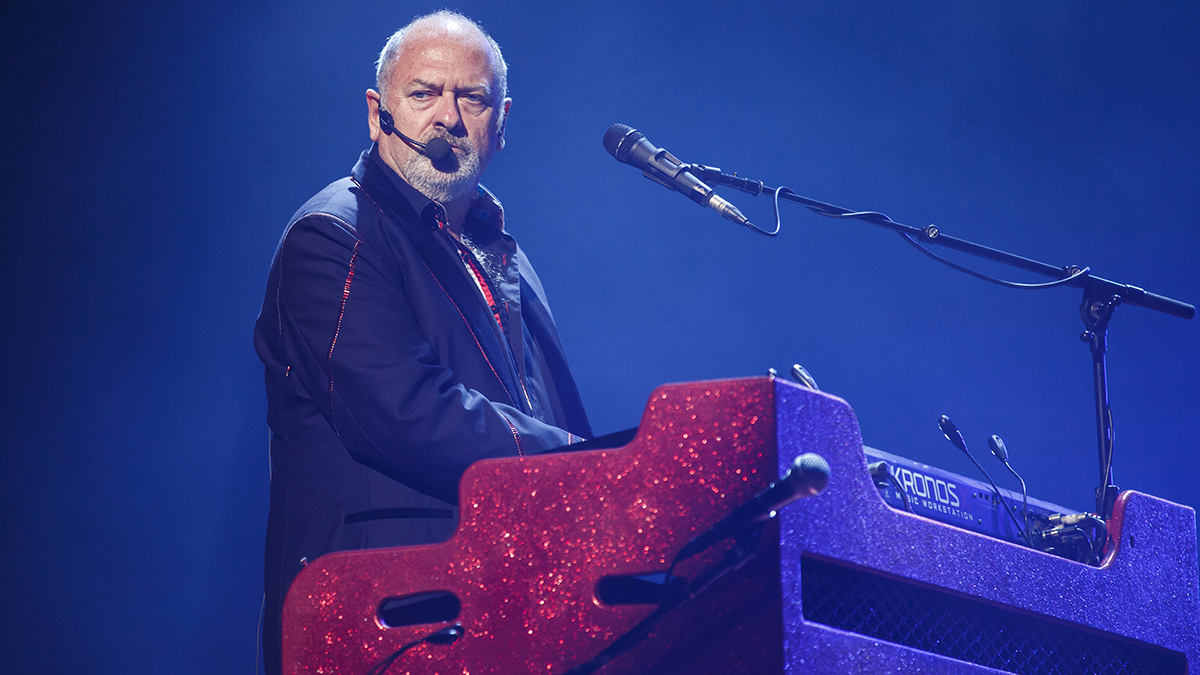“If I wanted to have a string sound, I had to change, unload and reload while I was playing, and that led to all kinds of problems”: Queen live keyboard player Spike Edney on ‘80s tech, streamlining his rig and using Freddie Mercury vocal samples
“I suppose what I think is that Queen is quite a demanding musical adventure, and there are lots of things that can be done to make their sounds more realistic for the audience,” he says
He might not be an official member of the band, but keyboard player Spike Edney has been part of the Queen live line-up since 1984. He began his stint on The Works Tour, and was also part of the subsequent The Magic Tour, which would turn out to be Freddie Mercury’s last.
Edney’s association with Queen continues to this day, and he recently spoke to Korg about the keyboard setup he uses in the current incarnation of the band’s live show, which is fronted by Brian May, Roger Taylor and singer Adam Lambert.
As you might expect, the rig has changed a bit over the years; where Edney used to have to take multiple keyboards on stage, he can now handle everything with just one: the Korg Nautilus.
“Back in those days, in 1984, I had three keyboards,” Edney recalls. “I had an analogue keyboard [at the bottom], then I had a sampler keyboard in the middle and on the top I had a vocoder.”
Today’s workstations, of course, have huge sample memory, but back in the ‘80s, limited storage capacity meant that you had to switch between samples by loading them up from floppy disk.
“If I wanted to have a string sound, I had to change, unload and reload while I was playing, and that led to all kinds of problems.”
Edney also explains how he discovered that having the vocoder could help him to thicken up Queen’s backing vocals, which were always crucial to the band’s sound on record.
Get the MusicRadar Newsletter
Want all the hottest music and gear news, reviews, deals, features and more, direct to your inbox? Sign up here.
“Queen are famous for their multi-layered studio vocals,” says Edney. “Very difficult for them to do on stage as there’s only four of them. And I’m the extra person - five.
“So Fred [Mercury] is the lead singer, Brian [May] and Roger [Taylor] can do backing vocals. Brian is often running around the stage, though, and he doesn’t. John [Deacon] doesn’t sing, the bass player.
“And so Roger and I do the backing vocals so that’s two voices. Well, that’s not multi-layered, but in certain songs I could use help.”
Edney goes on to demonstrate how the vocoder provided that help in song’s such as Now I’m Here, enabling him to give the backing vocals some “depth and texture”.

In A Kind Of Magic, meanwhile, Edney reveals that the opening samples he plays are taken directly from the recording of the song and that he also triggers a sample of Freddie Mercury’s voice singing the eponymous opening line. Some judicious use of the vocoder and pitchwheel, meanwhile, enables him to recreate the vocal ‘slides’ that appear towards the end of the song.
There are studio samples in use during Another One Bites The Dust, too - the backwards piano and cymbal, for example - and Edney says that he also calls on some of Korg’s own samples that are built into the Nautilus.
“Of course, you have to use things like this sparingly,” says Edney, as he fires off what sounds suspiciously like a helicopter sample (thankfully, there’s no sign of the ‘dog bark’). “You can’t have them going on all the time.”
Elsewhere, Edney discusses how he splits and layers his keyboard in Under Pressure, before ending, inevitably, with a rendition of Bohemian Rhapsody and that trademark final ‘gong’.
“I suppose what I think is that Queen is quite a demanding musical adventure, and there are lots of things that can be done to make their sounds more realistic for the audience,” he says. “You can’t make it exactly like the record - that’s impossible - but what you can do is give it something that gives people the impression, and if you make it close enough, the brain will do the rest.”



I’m the Deputy Editor of MusicRadar, having worked on the site since its launch in 2007. I previously spent eight years working on our sister magazine, Computer Music. I’ve been playing the piano, gigging in bands and failing to finish tracks at home for more than 30 years, 24 of which I’ve also spent writing about music and the ever-changing technology used to make it.
"Yamaha has achieved an extraordinary level of immersiveness and realism, crafting an instrument that sounds closer to an acoustic piano and feels like one under your fingers": Yamaha Clavinova CLP-885 digital piano review
"Despite its size, it delivers impressive audio quality and premium functions as well as featuring a good selection of inspired sounds": Roland GO:Piano 88PX review






![PRS Archon Classic and Mark Tremonti MT 15 v2: the newly redesigned tube amps offer a host of new features and tones, with the Alter Bridge guitarist's new lunchbox head [right] featuring the Overdrive channel from his MT 100 head, and there's a half-power switch, too.](https://cdn.mos.cms.futurecdn.net/FD37q5pRLCQDhCpT8y94Zi.jpg)





